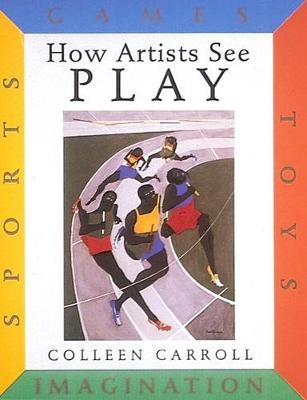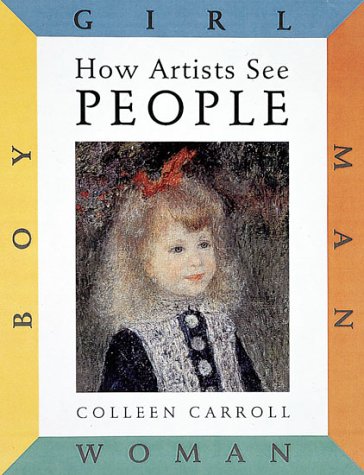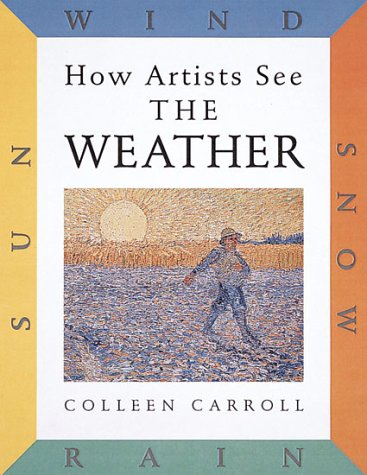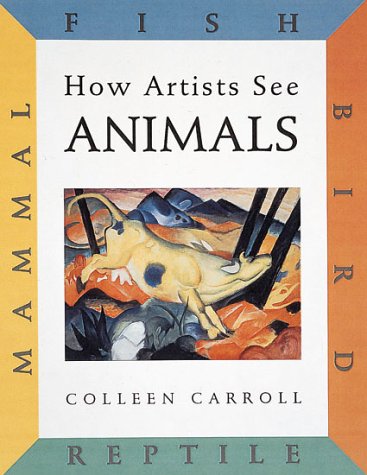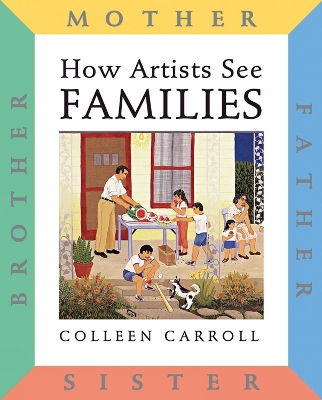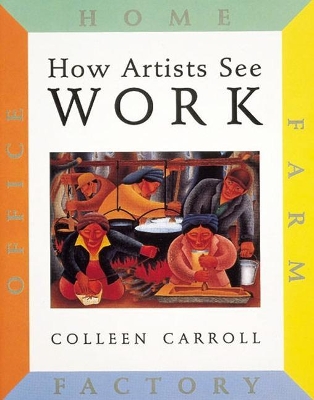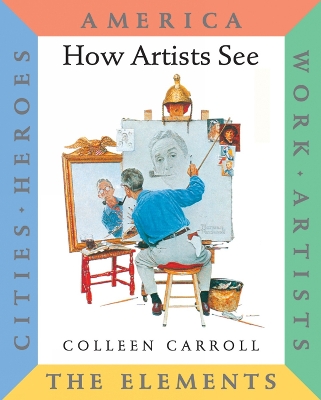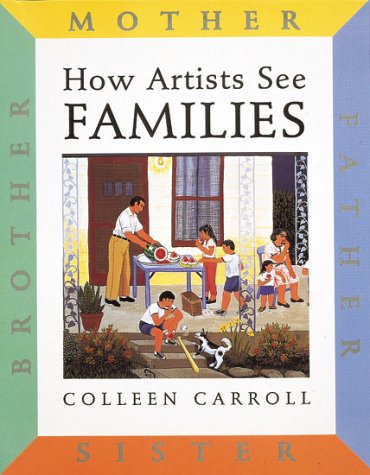How artists see
12 total works
As it introduces basic artistic concepts, styles, and techniques, it also provides loads of fun. For children who want to know more about the artists whose works appear in the book, biographies are provided at the end, along with suggestions for further reading and an international list of museums where each artists works can be seen. As they begin to understand the multitude of ways that artists see, children will deepen their appreciation of art, the world around them, and, most importantly, their own unique visions.
This direct, interactive approach to art -- and to the world -- promotes self-exploration, self-discovery, and self-expression. As it introduces basic artistic concepts, styles, and techniques, it also provides loads of fun. For children who want to know more about the artists whose works appear in the book, biographies are provided at the end, along with suggestions for further reading and an international list of museums where each artist's works can be seen. As children begin to understand the multitude of ways that artists see, they will deepen their appreciation of art, the world around them, and, most importantly, their own unique vision.
This direct, interactive approach to art -- and to the world -- promotes self-exploration, self-discovery, and self-expression. As it introduces basic artistic concepts, styles, and techniques, it also provides loads of fun. For children who want to know more about the artists whose works appear in the book, biographies are provided at the end, along with suggestions for further reading and an international list of museums where each artist's works can be seen. As children begin to understand the multitude of ways that artists see, they will deepen their appreciation of art, the world around them, and, most importantly, their own unique vision.
This direct, interactive approach to art - and to the world - promotes self-exploration, self-discovery, and self-expression. The books introduce basic artistic concepts, styles, and techniques, and are loads of fun. For children who want to know more about the artists whose works appear in each book, biographies are provided at the end, along with suggestions for further reading and an international list of museums where each artist's works can be seen. As children begin to understand the multitude of ways that artists see, they should deepen their appreciation of art and artists, of the world around them, and of their own unique vision.
As it introduces basic artistic concepts, styles, and techniques, it also provides loads of fun. For children who want to know more about the artists whose works appear in the book, biographies are provided at the end, along with suggestions for further reading and an international list of museums where each artists works can be seen. As they begin to understand the multitude of ways that artists see, children will deepen their appreciation of art, the world around them, and, most importantly, their own unique visions.
Handsomely packaged in sturdy slipcased sets, these classic books make ideal gifts for the home and essential resources for the classroom. As teaching tools, they are especially versatile, being readily adaptable to grades K-6 and intersecting with disciplines as various as literature, history, science, and social studies through the many activities detailed in the series Teachers' Guide (available separately). Whether poring over Matisse's goldfish, Jacob Lawrence's Olympic athletes, or Hiroshige's moonlit cityscapes, readers of How Artists See will delight in discovering how the world can be transformed by great artists' creativity-and their own.
In this revised and redesigned edition of the classic How Artists See Animals, more than half the artworks are newly selected - and they range from contemporary street art to an ancient Greek coin. Children will discover how Andy Warhol’s rhinoceros resembles a prehistoric cave painting, how Frank Gehry turned a fish’s sleek aquatic shape into architecture, and how Georgia O’Keefe captured a bird in flight using just a few curving lines.
Each volume in this innovative best-selling series, with over 200,000 in print, is devoted to a subject that every child already knows from personal experience. In How Artists See Heroes sixteen works of art show the many different ways a selection of great artists have perceived and expressed the diversity and variety of heroes throughout the ages. Here are Michelangelo's David, Liberty Leading the People by Eugene Delacroix, Moonwalk by Andy Warhol, and an award-winning photograph of Mohammed Ali by Neil Liefer to name a few examples. Author Colleen Carroll's engaging, conversational text is filled with thought-provoking questions and imaginative activities that spark children's natural curiosity both about the subject of the artwork and about the way it was created.
This direct, interactive approach to art - and to the world - promotes self-exploration, self-discovery, and self-expression. As it introduces basic artistic concepts, styles, and techniques, it also provides loads of fun. For children who want to know more about the artists whose works appear in the book, biographies are provided at the end, along with suggestions for further reading and an international list of museums where each artists works can be seen. As they begin to understand the multitude of ways that artists see, children will deepen their appreciation of art, the world around them, and, most importantly, their own unique visions.
This direct, interactive approach to art -- and to the world -- promotes self-exploration, self-discovery, and self-expression. As it introduces basic artistic concepts, styles, and techniques, it also provides loads of fun. For children who want to know more about the artists whose works appear in the book, biographies are provided at the end, along with suggestions for further reading and an international list of museums where each artist's works can be seen. As children begin to understand the multitude of ways that artists see, they will deepen their appreciation of art, the world around them, and, most importantly, their own unique vision.
